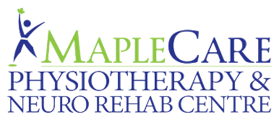
As a person ages their balance and mobility declines to some degree. This may a affect the ability to perform even simple tasks or activities of daily living.
Several systems in the body need to work together in order to have good balance. This involves input from the central nervous system, muscles, joints, inner ear and the eyes. The brain then coordinates this input and sends signals to the body to make adjustments in order to maintain balance.
If one or more of the systems is not sending correct signals to the brain, a person may not be able to maintain or correct their balance.
Causes of Balance Problems
- neurological conditions (such as Parkinson’s Disease, stroke, head injuries etc)
- inner ear problems
- vision problems
- peripheral neuropathy (as in diabetes)
- heart or blood pressure problems
- muscle and joint issues
- certain medications
- inactivity and loss of strength and mobility
- dementia
- fear of falling
- environmental hazards (including low light)

A person with balance problems may experience tripping, swaying, stumbling, dizziness and falling. These balance issues can occur when standing still (static balance) or when moving (dynamic balance). Injuries sustained in a fall may be serious and permanent, which then reduces mobility and balance further.
This loss of balance may lead to a loss of independence, difficulty with exercising, difficulties with simple tasks (such as cooking or cleaning) or socializing with family and friends.
It is important to see a physiotherapist at the first sign of mobility or balance issues in order for the treatment to be most effective.
How Can Physiotherapy Help With Balance Problems?
Maplecare physiotherapists can assess your balance and help to establish the cause of your balance problem. They will conduct a mobility assessment (including an evaluation of your gait) and do static and dynamic balance tests. Common tests used to evaluate balance are the Berg Balance Scale, the Sit to Stand and the Get Up and Go tests.

Treatment will include:
- The development of an appropriate exercise program to help improve your strength, balance and function. These exercises should be challenging: It is important that the exercises are safe yet are difficult enough in order for you to experience an improvement in your balance. The exercises will be targeted to your individual level and will be modified as you improve.
- Manual therapy to improve pain and inflammation of the muscles or joints
- Gait training
- The development of a home exercise program
- If appropriate, the physiotherapist will conduct an evaluation of your home environment
